- UK release date:
- Apr 17, 1970
- US release date:
- Apr 20, 1970
- Publisher:
- Apple Records
- Reference:
- PCS 7102 (UK) / STAO 3363 (US)
Related articles
Paul and Linda McCartney on holiday in Antigua
Mid-December 1969
Paul and Linda McCartney on holiday in Provence and Corfu
May 15 - June 17, 1969
Paul McCartney and Linda Eastman on holiday in Portugal
December 11 - End of December, 1968
Spread the love! If you like what you are seeing, share it on social networks and let others know about The Paul McCartney Project.
Hide track details
Track list
Side 1
1.
Written by Paul McCartney
0:46 • Studio version • A • Stereo
- Paul McCartney :
- Acoustic guitar, Bass, Percussion, Producer, Recording engineer, Vocals
- Phil McDonald :
- Mixing engineer
- Session Recorded:
- Late December 1969
- Studio :
- At home, Cavendish Avenue, London
- Session Mixing:
- Feb 21, 1970
- Studio :
- EMI Studios, Abbey Road
Credits & recording details courtesy of Luca Perasi • Buy Paul McCartney: Music Is Ideas. The Stories Behind the Songs (Vol. 1) 1970-1989 on Amazon
2.
Written by Paul McCartney
2:43 • Studio version • A • Stereo
- Paul McCartney :
- Acoustic guitar, Bass, Drums, Electric guitar, Producer, Recording engineer, Vocals
- Phil McDonald :
- Mixing engineer
- Session Recording:
- Late December 1969
- Studio :
- At home, Cavendish Avenue, London
- Session Mixing:
- Feb 22, 1970
- Studio :
- EMI Studios, Studio Two, Abbey Road
Credits & recording details courtesy of Luca Perasi • Buy Paul McCartney: Music Is Ideas. The Stories Behind the Songs (Vol. 1) 1970-1989 on Amazon
3.
Written by Paul McCartney
1:44 • Studio version • A • Stereo
- Paul McCartney :
- Acoustic guitar, Bass, Drums, Electric guitar, Percussion, Producer, Recording engineer
- Phil McDonald :
- Mixing engineer
- Session Recording:
- Late December 1969
- Studio :
- At home, Cavendish Avenue, London
- Session Mixing:
- Feb 22, 1970
- Studio :
- EMI Studios, Studio Two, Abbey Road
Credits & recording details courtesy of Luca Perasi • Buy Paul McCartney: Music Is Ideas. The Stories Behind the Songs (Vol. 1) 1970-1989 on Amazon
4.
Written by Paul McCartney
2:40 • Studio version • A • Stereo
- Paul McCartney :
- Acoustic guitar, Bass, Drums, Producer, Vocals
- Phil McDonald :
- Mixing engineer, Recording engineer
- Session Recording:
- Feb 23, 1970
- Studio :
- EMI Studios, Studio Two, Abbey Road
- Session Mixing:
- Feb 24, 1970
- Studio :
- EMI Studios, Studio Two, Abbey Road
Credits & recording details courtesy of Luca Perasi • Buy Paul McCartney: Music Is Ideas. The Stories Behind the Songs (Vol. 1) 1970-1989 on Amazon
5.
Medley
1.
Written by Paul McCartney
1:28 • Studio version • A • Stereo • Medley with "Glasses", "Suicide"
- Paul McCartney :
- Acoustic guitar, Bass, Bongos, Drums, Electric guitar, Maracas, Organ, Producer
- Phil McDonald :
- Mixing engineer
- Robin Black :
- Recording engineer
- Session Recording:
- Feb 12-20, 1970
- Studio :
- Morgan Studios, London
- Session Mixing:
- Feb 24, 1970
- Studio :
- EMI Studios, Studio Two, Abbey Road
Credits & recording details courtesy of Luca Perasi • Buy Paul McCartney: Music Is Ideas. The Stories Behind the Songs (Vol. 1) 1970-1989 on Amazon
2.
Written by Paul McCartney
0:29 • Studio version • A • Stereo • Medley with "Hot As Sun", "Suicide"
- Paul McCartney :
- Glasses, Piano, Producer, Recording engineer, Vocals
- Phil McDonald :
- Mixing engineer
- Session Recording:
- Feb 21 to 25, 1970
- Studio :
- EMI Studios, Studio Two, Abbey Road
- Session Mixing:
- Late February 1970
- Studio :
- EMI Studios, Studio Two, Abbey Road
Credits & recording details courtesy of Luca Perasi • Buy Paul McCartney: Music Is Ideas. The Stories Behind the Songs (Vol. 1) 1970-1989 on Amazon
3.
Written by Paul McCartney
0:09 • Studio version • A • Stereo • Medley with "Glasses", "Hot As Sun"
- Paul McCartney :
- Mixing engineer, Piano, Producer
- Session Recording:
- Late December 1969
- Studio :
- At home, Cavendish Avenue, St. John's Wood, UK
- Session Mixing:
- Late February 1970
- Studio :
- EMI Studios, Studio Two, Abbey Road
6.
Written by Paul McCartney
1:57 • Studio version • A • Stereo
- Paul McCartney :
- Acoustic guitar, Bass, Drums, Producer, Vocals, Xylophone
- Phil McDonald :
- Mixing engineer
- Robin Black :
- Recording engineer
- Session Recording:
- Late December 1969
- Studio :
- At home, Cavendish Avenue, London
- Session Overdubs:
- Feb 12-20, 1970
- Studio :
- Morgan Studios, London
- Session Mixing:
- Late February 1970
- Studio :
- EMI Studios, Studio Two, Abbey Road
Credits & recording details courtesy of Luca Perasi • Buy Paul McCartney: Music Is Ideas. The Stories Behind the Songs (Vol. 1) 1970-1989 on Amazon
7.
Written by Paul McCartney
3:00 • Studio version • A • Stereo
- Paul McCartney :
- Acoustic guitar, Backing vocals, Bass, Drums, Electric guitar, Percussion, Producer, Vocals
- Linda McCartney :
- Backing vocals, Vocals
- Phil McDonald :
- Mixing engineer, Recording engineer
- Session Recording:
- Feb 25, 1970
- Studio :
- EMI Studios, Studio Two, Abbey Road
- Session Mixing:
- Feb 25, 1970
- Studio :
- EMI Studios, Studio Two, Abbey Road
Credits & recording details courtesy of Luca Perasi • Buy Paul McCartney: Music Is Ideas. The Stories Behind the Songs (Vol. 1) 1970-1989 on Amazon
Side 2
1.
Written by Paul McCartney
2:50 • Studio version • A • Stereo
- Paul McCartney :
- Aerosol spray, Bass, Cow bell, Drums, Electric guitar, Producer, Tambourine, Vocals
- Robin Black :
- Mixing engineer, Recording engineer
- Session Recording:
- Late December 1969
- Studio :
- Home studio, Cavendish Avenue, St.John's Wood
- Session Overdubs:
- Feb 12-20, 1970
- Studio :
- Morgan Studios, London
- Session Mixing:
- Feb 12-20, 1970
- Studio :
- Morgan Studios, London
Credits & recording details courtesy of Luca Perasi • Buy Paul McCartney: Music Is Ideas. The Stories Behind the Songs (Vol. 1) 1970-1989 on Amazon
2.
Written by Paul McCartney
4:09 • Studio version • A • Stereo
- Paul McCartney :
- Acoustic guitar, Bass, Drums, Electric guitar, Mellotron, Piano, Producer, Recording engineer
- Phil McDonald :
- Mixing engineer
- Session Recording:
- Late December 1969
- Studio :
- At home, Cavendish Avenue, London
- Session Mixing:
- Feb 21, 1970
- Studio :
- EMI Studios, Abbey Road
Credits & recording details courtesy of Luca Perasi • Buy Paul McCartney: Music Is Ideas. The Stories Behind the Songs (Vol. 1) 1970-1989 on Amazon
3.
Written by Paul McCartney
2:25 • Studio version • A • Stereo
- Paul McCartney :
- Acoustic guitar, Backing vocals, Bass, Drums, Producer, Recording engineer, Vocals
- Linda McCartney :
- Backing vocals
- Phil McDonald :
- Mixing engineer
- Robin Black :
- Recording engineer
- Session Recording:
- Late December 1969
- Studio :
- At home, Cavendish Avenue, London
- Session Overdubs:
- Feb 12-20, 1970
- Studio :
- Morgan Studios, London
- Session Mixing:
- Late February 1970
- Studio :
- EMI Studios, Studio Two, Abbey Road
Credits & recording details courtesy of Luca Perasi • Buy Paul McCartney: Music Is Ideas. The Stories Behind the Songs (Vol. 1) 1970-1989 on Amazon
4.
Written by Paul McCartney
2:37 • Studio version • A • Stereo
- Paul McCartney :
- Bass, Drums, Electric guitar, Mellotron, Piano, Producer
- Phil McDonald :
- Mixing engineer
- Robin Black :
- Recording engineer
- Session Recording:
- December, 1969
- Studio :
- At home, Cavendish Avenue, London
- Session Overdubs:
- Feb 12-20, 1970
- Studio :
- Morgan Studios, London
- Session Mixing:
- Feb 21, 1970
- Studio :
- EMI Studios, Abbey Road
Credits & recording details courtesy of Luca Perasi • Buy Paul McCartney: Music Is Ideas. The Stories Behind the Songs (Vol. 1) 1970-1989 on Amazon
5.
Written by Paul McCartney
3:54 • Studio version • A • Stereo
- Paul McCartney :
- Backing vocals, Bass, Drums, Electric guitar, Organ, Piano, Producer, Vocals
- Linda McCartney :
- Backing vocals
- Phil McDonald :
- Mixing engineer, Recording engineer
- Session Recording:
- Feb 22, 1970
- Studio :
- EMI Studios, Studio Two, Abbey Road
- Session Mixing:
- Feb 22, 1970
- Studio :
- EMI Studios, Studio Two, Abbey Road
Credits & recording details courtesy of Luca Perasi • Buy Paul McCartney: Music Is Ideas. The Stories Behind the Songs (Vol. 1) 1970-1989 on Amazon
6.
Written by Paul McCartney
4:15 • Studio version • A • Stereo
- Paul McCartney :
- Backing vocals, Bass, Drums, Electric guitar, Organ, Percussion, Piano, Producer
- Linda McCartney :
- Backing vocals
- Robin Black :
- Recording engineer
- Session Recording:
- Feb 18, 1970
- Studio :
- Morgan Studios, London
- Session Overdubs:
- Feb 12-20, 1970
- Studio :
- Morgan Studios, London
- Session Mixing:
- Feb 12-20, 1970
- Studio :
- Morgan Studios, London ?
Credits & recording details courtesy of Luca Perasi • Buy Paul McCartney: Music Is Ideas. The Stories Behind the Songs (Vol. 1) 1970-1989 on Amazon
About
I nearly had a breakdown. I suppose the hurt of it all, and the disappointment, and the sorrow of losing this great band, these great friends … I was going crazy.
Paul McCartney talking to his daughter Mary, 2001
From Wikipedia:
McCartney is the debut solo album by English musician Paul McCartney, released on 17 April 1970 by Apple Records. McCartney recorded it in secrecy, mostly using basic home-recording equipment at his house in St John’s Wood. Mixing and some recording took place at professional London studios. In its loosely arranged performances, McCartney eschewed the polish of the Beatles’ past records in favour of a lo-fi style. Apart from occasional contributions by his wife, Linda, McCartney performed the entire album alone by overdubbing on four-track tape.
McCartney recorded the album during a period of depression and confusion, following John Lennon’s private departure from the Beatles in September 1969. Conflicts over the release of McCartney’s album further estranged him from his bandmates, as he refused to delay the album’s release to allow for Apple’s previously scheduled titles, notably the Beatles’ album Let It Be. A press release in the form of a self-interview supplied with UK promotional copies of McCartney led to the Beatles’ break-up.
McCartney received mostly negative reviews, while McCartney was vilified for seemingly ending the Beatles. The record was widely criticised for being under-produced and for its unfinished songs, although the ballad “Maybe I’m Amazed” was consistently singled out for praise. Commercially, McCartney benefited from the publicity surrounding the break-up; it held the number 1 position for three weeks on the US Billboard Top LPs before yielding that position to Let It Be. It peaked at number 2 in Britain.
In later years, the album was credited for having had an impact on DIY musicians and lo-fi music styles. McCartney also recorded two successor albums: McCartney II (1980) and McCartney III (2020). In 2011, the first McCartney record was reissued with bonus tracks as part of the Paul McCartney Archive Collection.
Background
After John Lennon requested a “divorce” from the Beatles in a band meeting on 20 September 1969, Paul McCartney withdrew to his farm in Campbeltown, Scotland. Author Robert Rodriguez describes his frame of mind as “brokenhearted, shocked, and dispirited at the loss of the only job he had ever known”. While Lennon’s departure was not made official, partly for business reasons, McCartney’s period in seclusion with his family coincided with widespread rumours in America that he had died – an escalation of the three-year-old “Paul Is Dead” rumour. The rumour was dispelled by journalists from BBC Radio and Life magazine, who tracked him down at his farm, High Park.
McCartney’s two months in Scotland created an estrangement between him and his bandmates, further to the division caused by their appointment of Allen Klein as business manager in May that year. McCartney later cited Klein’s appointment as the first “irreconcilable difference” within the Beatles, since he continued to favour New York lawyers Lee Eastman and John Eastman – father and brother, respectively, of his wife Linda. For McCartney, the period following Lennon’s departure was also marked by a bout of severe depression, during which, in his own estimation, he came close to suffering a nervous breakdown.
In his book Fab: An Intimate Life of Paul McCartney, Howard Sounes writes of the McCartneys’ exile at High Park: “This was grim for Linda. She had a seven-year-old and a baby to look after, with a husband who was depressed and drunk. She later told friends it was one of the most difficult times in her life, while Paul reflected that he might have become a rock ‘n’ roll casualty at this point in his career.” With Linda’s encouragement, McCartney began to consider a future outside the Beatles, by writing or finishing songs for his first solo album, McCartney.
Content and recording – Studer home recordings, December 1969 – January 1970
I was like a professor in his laboratory. Very simple [set-up], as basic as you can get … Even now that album has an interesting sound. Very analogue, very direct. – McCartney, 2001
McCartney and his family returned to London shortly before Christmas 1969, and he started work on the album at his home in Cavendish Avenue, St John’s Wood. The recordings were carried out on a recently delivered Studer four-track tape recorder, without a mixing desk, and therefore without VU displays as a guide for recording levels. McCartney described his home-recording set-up as “Studer, one mike, and nerve”. He played all the musical instruments on the album – from acoustic and electric guitars and bass to keyboards, drums and various percussion instruments – with Linda supplying backing vocals on some songs.
The album’s recordings eschewed the musical sophistication that distinguished the Beatles’ work with producer George Martin, particularly the band’s 1969 release Abbey Road. According to The New Rolling Stone Encyclopedia of Rock & Roll, McCartney is “a one-man-studio-band LP” with “a pronounced homemade quality; it was spare and sounded almost unfinished”. Rodriguez writes that in his avoidance of the Abbey Road studio aesthetic, “In his own way, [McCartney] was fulfilling the ‘as-nature-intended’ theme of the aborted ‘Get Back’ sessions, albeit as a one-and-a-half man band.”
McCartney first taped a 45-second portion of a song he wrote in Campbeltown, “The Lovely Linda“. As with much of the album, McCartney sang the composition accompanied by acoustic guitar before filling the remaining tracks on the Studer with a second guitar part, bass and percussive accompaniment. Although this performance of “The Lovely Linda” was only intended as a test of the new equipment, it would be included on the official release, as the opening track, complete with the sound of McCartney giggling at the end of the recording. Reflected in the sequencing of the album, the second and third songs McCartney taped were “That Would Be Something“, also written in Scotland, and the instrumental “Valentine Day”. The latter was one of three selections on McCartney that its creator “ad-libbed on the spot”, he later claimed, along with the similarly rock-oriented “Momma Miss America” and “Oo You”.
On 3 January 1970, he interrupted work on McCartney to participate in the Beatles’ final recording session, when he, George Harrison and Ringo Starr recorded the Harrison composition “I Me Mine” at Abbey Road Studios. The next day, the three musicians revisited McCartney’s “Let It Be“, a song recorded by the band in January 1969 for their forthcoming Get Back film project.
Content and recording – Morgan Studios, February 1970
On 12 February, McCartney took his Studer tapes to Morgan Studios, in the north-west London suburb of Willesden, in order to copy all the four-track recordings onto eight-track tape, to allow for further overdubbing. Keen to maintain secrecy about the project, McCartney worked at Morgan under the pseudonym “Billy Martin”. By this point, he had also taped “Junk” and “Teddy Boy” at Cavendish Avenue, two songs he began writing during the Beatles’ 1968 visit to India and had rehearsed with the band in January 1969. The other recordings transferred to eight-track included “Glasses” – a sound effects piece featuring “wineglasses played at random”, in McCartney’s description – and “Singalong Junk”, an instrumental version of “Junk” to which he now added a strings part played on a Mellotron. Among other overdubs on these eight-track mixes, McCartney supplied a vocal to the previously instrumental “Oo You”.
While at Morgan, he also taped “Hot as Sun”, a “Polynesian-influenced” instrumental dating from the late 1950s, according to author Bruce Spizer, and “Kreen-Akrore”, which Sounes describes as an “experimental percussion track”. Begun on 12 February, “Kreen-Akrore” was McCartney’s attempt to sonically describe a hunt by the Kreen-Akrore tribespeople of the Brazilian Amazon, after he had watched an ATV documentary on their way of life. Amid musical interludes featuring electric guitar, organ and piano, McCartney used a bow and arrow he purchased at the Knightsbridge department store Harrods, according to engineer Robin Black. The latter was among the few people who knew that McCartney was making a solo album. Linda contributed the breathing and animal-like sounds, with McCartney, on “Kreen-Akrore”.
Content and recording – Abbey Road Studios, February–March 1970
On 21 February 1970, McCartney moved to the more familiar Abbey Road Studios, with the booking again under the name of Billy Martin. There, he carried out further mixing on the previously recorded material, as well as taping new selections. On 22 February, McCartney recorded “Every Night” – another composition rehearsed during the Get Back sessions, and a song that authors Chip Madinger and Mark Easter note as the “first ‘professional’ recording” on the finished album, given its position as track 4, following “Valentine Day”. The same day McCartney recorded “Maybe I’m Amazed“, a piano-based ballad dedicated to Linda, and, in Madinger and Easter’s description, “the most elaborate instrumental track on the LP”. The final new recording for McCartney was “Man We Was Lonely”, which he taped on 25 February, having composed it earlier that day. It is the track on the album on which Linda’s vocals are most audible.
Final mixes of songs such as “Junk” and “Teddy Boy” were completed at Morgan Studios along with the remaining tracks on the album. During this process, “Hot as Sun” and “Glasses” were segued into a medley, ending with a snippet of McCartney performing the song “Suicide” on piano. Unacknowledged in the track listing for the album, “Suicide” was a composition that he had intended for Frank Sinatra to record. He also edited two separate instrumental pieces into one for “Momma Miss America”; McCartney can be heard shouting the first portion’s original title, “Rock ‘n’ Roll Springtime”, on the recording.
On 23 March, while American producer Phil Spector began mixing the Get Back tapes for release as the Beatles’ Let It Be album in Abbey Road’s Studio 4, McCartney completed work on his album in Studio 2. Although McCartney has frequently maintained that he was ignorant of Spector’s involvement until receiving an acetate copy of Let It Be for approval, author Peter Doggett writes that after “several weeks”, McCartney had finally “answered the string of messages he’d received about Phil Spector” and had agreed to let him prepare Let It Be for release.
Artwork
For the album’s gatefold cover, artist Gordon House and designer Roger Huggett worked on a design concept by McCartney. Photos by Linda McCartney featured throughout the packaging, including a collage of 21 family snapshots in the jacket’s inner spread. The images depicted Paul, Linda, seven-year-old Heather (Linda’s daughter by her first marriage), newborn Mary, and the McCartneys’ sheepdog, Martha. The gatefold cover of McCartney was the first of close to 30 years of albums by her husband to feature Linda McCartney’s photography.
Set against a black background, the front cover image consisted of a bowl of cherry-red liquid placed on a cream-coloured wall and surrounded by loose red cherries, as if the fruit had been emptied from the bowl. On the back cover, a photo taken by Linda in Scotland showed her husband with Mary tucked inside his fur-lined leather jacket. Madinger and Easter comment that, unlike Lennon, McCartney did not feel the need to include his wife on the cover, and her back-cover photo was a “stunning” contribution from the former professional photographer. In a 2013 news article recalling the album’s release, the Philadelphia radio station WMMR described the photo of McCartney and his baby daughter as “iconic” and reflective of “his ultimate message: ‘Home, family (and) love’.”
Release – Scheduling conflict
Maybe John was right. Maybe the Beatles were crap. The sooner I get this album out and get it over with the better. – McCartney commenting after finishing work on his debut solo album
McCartney said that he “boycotted” Apple’s offices after Klein’s arrival in 1969. His continued isolation in 1970 led to Lennon, Harrison and Starr making business decisions without McCartney’s input. One decision concerned the release of the Let It Be documentary, a necessity in order to fulfil the Beatles’ contractual obligations to film company United Artists. McCartney privately agreed to a mid-April release date for McCartney with Apple Records executive Neil Aspinall, one of the few people associated with the Beatles who was aware of the project. Its late addition to Apple’s schedule clashed with the imminent release of the Let It Be album, and of Starr’s solo debut, Sentimental Journey, which was due out on 27 March. On 25 March, after discovering that Klein arranged to have the release of McCartney postponed, McCartney received an assurance from Harrison, as a director of Apple Records, that his solo album would be issued on 17 April, as planned.
The situation then changed when Spector reported that work on the Let It Be album was almost complete, meaning that it could be issued to coincide with the film’s world premiere, which was scheduled for 28 April, in New York. Doggett writes that “the solution was obvious”, since Let It Be was “a multimedia package” and, as a band venture rather than a solo album, it “should automatically take precedence”. Harrison and Lennon therefore wrote to McCartney on 31 March to say that they had instructed EMI, Apple’s parent label, to postpone his album until 4 June; they also explained the need to stagger the various new releases, particularly in America, where the Hey Jude compilation had been issued on 26 February. Rather than have a member of staff deliver the letter to McCartney at Cavendish Avenue, Starr decided to take it to him personally.
McCartney later described the tone of Starr’s message as “the party line”, to which he reacted badly: “I told [Starr] to get out. I had to do something like that in order to assert myself because I was just sinking … I was getting pummelled about the head, in my mind anyway.” According to Starr, McCartney “went crazy”, threatening: “I’ll finish you now. You’ll pay!” Although the other Beatles backed down over the release of McCartney, the confrontation initiated what Rodriguez terms “a three-against-one war” within the band.
Release – Press release and the Beatles’ break-up
On 9 April, McCartney released a Q&A package to the British press, in which he explained his reasons for making his solo album and described its overall theme as “Home, Family, Love”. Compiled with the help of Apple executives Derek Taylor and Peter Brown, the self-interview also contained questions McCartney imagined he would be asked regarding the possibility of the Beatles splitting up. While stopping short of saying that the band was finished, McCartney stated that he did not know whether his “break with the Beatles” would be temporary or permanent and that it was based on business, personal and creative differences. He also said that he had not missed Starr’s drumming, nor any of his bandmates’ contributions, when making the album, and could not envisage a time when he and Lennon would write together again. When asked whether Klein and his company ABKCO would be “in any way involved with the production, manufacturing, distribution or promotion of this new album”, McCartney said, “Not if I can help it”, and he stressed that Klein was in no way his business representative. Although McCartney later recalled that he was responding to questions put to him, Brown said that McCartney wrote all the questions, as did Taylor.
That same day, McCartney called Lennon at the clinic where he was undergoing primal scream therapy with his wife, Yoko Ono. McCartney told him that he was following Lennon’s example and leaving the Beatles, but he made no mention of making his departure public. Doggett suggests that McCartney’s intention was not necessarily to break up the band, and cites Beatles confidant Ray Connolly’s recollection that McCartney was “devastated” by the media’s interpretation of his self-interview. The first reaction from the press was a piece by Don Short of the Daily Mirror, on 10 April, titled “PAUL IS QUITTING THE BEATLES”. From there, in author Mark Hertsgaard’s description, “newspaper headlines around the world reduced the story to screaming variations of PAUL BREAKS UP THE BEATLES”.
Release – Sales and promotion
It’s a simple fact that [McCartney] can’t have his own way, so he’s causing chaos. I put out four albums last year, and I didn’t say a fucking word about quitting. – John Lennon, May 1970
McCartney was released in Britain on 17 April 1970 (as Apple PCS 7102), and three days later in America (Apple STAO 3363). While the reports about the Beatles’ break-up resulted in McCartney’s standing among Beatles fans to plummet, they also ensured that the album was highly publicised. Adding to this exposure in the US, McCartney commissioned a second set of print advertisements for the album, to counter what Doggett describes as Klein’s “incendiary statement of fact” in the official advertisements that Apple was “an ABKCO-managed company”.
In the UK, McCartney debuted at number 2, where it remained for three weeks behind the best-selling album of 1970, Simon and Garfunkel’s Bridge Over Troubled Water. By 15 May, McCartney had sold over 1 million copies in the US, and from 23 May, began a three-week stay at number 1 on the Billboard Top LPs chart, eventually going double platinum. Despite “Maybe I’m Amazed” receiving considerable airplay on US radio, McCartney refused to issue it or any other song from the album as a single.
McCartney’s former bandmates viewed his making the band’s break-up public as a betrayal in light of how Lennon had acquiesced to the group’s interests by staying silent about his departure the previous year, and as McCartney using the end of the Beatles as a way to promote his solo album. When asked for his opinion of the album shortly after its release, Harrison described “Maybe I’m Amazed” and “That Would Be Something” as “great”, but the rest, he said, “just don’t do much for me”. Harrison added that, unlike Lennon, Starr and himself, McCartney was probably too “isolated” from other musicians, such that: “The only person he’s got to tell him if the song’s good or bad is Linda.” In a December 1970 interview with Rolling Stone editor Jann Wenner, which was re-published the following year as the book Lennon Remembers, Lennon dismissed McCartney as “rubbish” and “Engelbert Humperdinck music”; he said that his primal therapy-inspired album John Lennon/Plastic Ono Band would “probably scare [McCartney] into doing something decent”. Lennon rejected Wenner’s interpretation of the back cover portrait as a possible reference to Ono’s recent miscarriage; instead, he read it as an example of the McCartneys slavishly following his and Ono’s lead by releasing a family-oriented album.
McCartney was followed by two sequels, McCartney II (released in 1980), and McCartney III (released in December 2020), both sharing the same recording technique as this album.
Critical reception – Contemporary reviews
On release, McCartney was widely criticised for being under-produced and for its unfinished songs. In addition, according to Nicholas Schaffner in his 1977 book The Beatles Forever, McCartney’s attempt to use the Beatles’ break-up to promote his solo album, while presenting himself as a happy family man, “apparently backfired”, since “many observers found the whole thing contrived, tasteless, and rather vicious.” Madinger and Easter write of the album receiving a “critical lambasting” and that the “general sentiment” among reviewers was “something to the effect of ‘He broke up the Beatles for this?!?'” Richard Williams of Melody Maker suggested that “With this record, [McCartney’s] debt to George Martin becomes increasingly clear …” Williams found “sheer banality” in all the tracks save for “Maybe I’m Amazed” and described “Man We Was Lonely” as “the worst example of his music-hall side”.
In a favourable assessment, for the NME, Alan Smith wrote that while on first listen he found McCartney “too harmlessly mild”, his view had changed with time, such that: “Listening to it is like hearing a man’s personal contentment committed to the sound of music. Most of the sounds, effects and ideas are sheer brilliance; much of the aura is of quiet songs on a hot summer night; and virtually all of the tracks reflect a kind of intangible roundness. ‘Excitement’ is not a word to use for this album … ‘warmth’ and ‘happiness’ are.” In his combined review of all the former Beatles’ 1970 solo releases, Geoffrey Cannon of The Guardian dismissed it as an album that had “no substance”. Cannon continued: “Paul reveals himself in it as a man preoccupied with himself, and his own situation. The music is boastfully casual … He seems to believe that anything that comes into his head is worth having. And he’s wrong.” John Gabree of High Fidelity magazine similarly bemoaned the expectation that “we should dig his every little noise” and found the reasons for the album’s failure evident in the Let It Be film, where McCartney appeared to be “the only Beatle who has stagnated as a human being”, as well as “incredibly arrogant” in his treatment of his bandmates. Gabree added that “Perhaps the greatest disappointment lies in the songs, although most of them could have been saved by better performances, especially the instrumentals.”
Writing for Rolling Stone, Langdon Winner found the songs “distinctly second rate” relative to McCartney’s best compositions as a Beatle, with only “Maybe I’m Amazed” “even com[ing] close” to matching that high standard, but he admired McCartney’s vocals and added: “if one can accept the album in its own terms, McCartney stands as a very good, although not astounding, piece of work.” Winner admitted to being repelled by the “tawdry propaganda” surrounding the release, however, about which he emphasised: “Remember, this is all stuff that Paul himself deliberately included [in the album’s press kit], not just some idle comments he let slip to a probing journalist.” The reviewer concluded: “I like McCartney very much. But I remember that the people of Troy also liked that wooden horse they wheeled through their gates until they discovered that it was hollow inside and full of hostile warriors.”
Critical reception – Retrospective assessments
In the 2004 edition of The Rolling Stone Album Guide, Greg Kot deems the album “so modest it barely registers” in comparison with Lennon’s Plastic Ono Band, adding: “Only the white soul of ‘Maybe I’m Amazed’ distinguishes otherwise unbearably slight confections such as ‘Lovely Linda.'” Stephen Thomas Erlewine of AllMusic writes that McCartney possesses “an endearingly ragged, homemade quality”, with “That Would Be Something”, “Every Night”, “Teddy Boy” and “Maybe I’m Amazed” all “full-fledged McCartney classics”. Although he notes that “the throwaway nature of much of the material … has become charming in retrospect”, Erlewine adds: “Unfortunately, in retrospect it also appears as a harbinger of the nagging mediocrity that would plague McCartney’s entire solo career.” Record Collector has highlighted “Every Night”, “Junk” and “Maybe I’m Amazed” as songs that “still sound absolutely effortless and demonstrate the man’s natural genius with a melody”.
Among Beatle biographers, Robert Rodriguez includes McCartney in his chapter covering the worst solo albums issued by the former band members between 1970 and 1980, saying: “For anyone wanting to get to the root of the most common rap against Paul’s solo output, look no further …” While bemoaning the lack of quality control that allowed “charmless ditties” such as “Teddy Boy” to go under-developed, Rodriguez writes: “What made McCartney so frustrating a listen was not the absence of compelling musical ideas; it was the abundance of them. Had melodies like ‘Momma Miss America’ been teased out into compositions with a beginning, middle, end, and point, McCartney could have ended up as highly regarded in its own way as Plastic Ono Band: a full slate of focused, listener-friendly pop confections that might very well have given fans far less cause for bitterness at the Beatles’ breakup.”
In 1999, Neil Young inducted McCartney into the Rock and Roll Hall of Fame and praised McCartney, saying: “I loved that record because it was so simple. And there was so much to see and to hear. It was just Paul. There was no adornment at all … There was no attempt made to compete with the things he had already done. And so out he stepped from the shadow of the Beatles.” McCartney subsequently told Rolling Stone that, given the album’s homemade qualities, he considered it to be rock music’s first indie album, adding: “Y’know, it’s now what would be called an ‘indie’ thing. To me, then, it was just … knockin’ around experimentin’ with some sounds and not worrying how it was gonna turn out. I think that was one of the secrets.” Citing its home recording and mixing, Brent Day of Paste felt that McCartney was arguably “one of the first big lo-fi records of its day.” It was one of McCartney’s two post-Beatle albums that was included in 1001 Albums You Must Hear Before You Die.
Reissues
McCartney was released on CD on 7 June 1993, along with six other studio albums McCartney made during the 1970s, including Ram (with Linda) and Band on the Run (with their band Wings).
On 13 June 2011, the album and McCartney’s second official solo work, McCartney II, were reissued together by Hear Music/Concord Music Group as part of The Paul McCartney Archive Collection. The album re-entered the charts in the UK, the Netherlands, France and Japan. On 17 November 2017, McCartney was re-released by Capitol/UMe without bonus tracks as part of McCartney’s 2016 return to Capitol Records and a catalogue service agreement taking over from Concord Records and Hear Music.
McCartney received a special 50th anniversary release in a limited edition half-speed mastered vinyl pressing for Record Store Day on 26 September 2020.
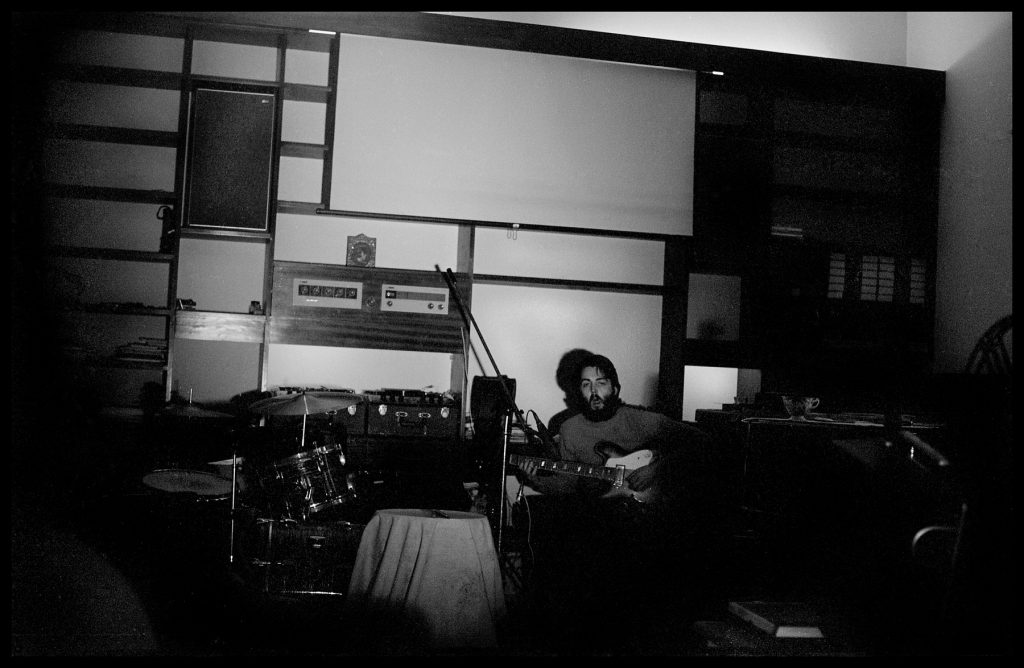
McCartney’ LP: A One-Man Show; No Disk Plans For The Beatles
NEW YORK — Paul McCartney is the last of the Beatles to undertake his own disk project. It takes the form of an LP, “McCartney”, that Apple Records will release this week (17) on a world-wide basis.
The LP is basically a one-man show, with McCartney having written, arranged, produced and performed 14 Of his own new songs. Further indicative of the solo nature of the album is the fact that McCartney plays all instruments. His only associate in the venture is his wife, Linda, who does harmonies. The set, a fold-open package replete with striking 4-colour photos of McCartney, his wife and two children, retails at a list price of $5.98. McCartney and his wife designed the cover.
“McCartney” represents the first key venture of McCartney Productions, solely owned by McCartney. An upcoming project will involve the film, TV and merchandising rights to the English cartoon favourite, Rupert.
The remaining Beatles, John Lennon, Paul Harrison and Ringo Starr, have over the past year gone their separate ways in various enterprises, including record production, writing and acting. Speculation has arisen over the possibility that the foursome, who quit the personal appearance scene several years ago, will ever enter a disk studio to record as a team.
John Eastman of Eastman & Eastman, attorneys and sole reps for McCartney Productions and McCartney personally, denied a breakup, but indicated that the team has no plans at present to record as a group. They last cut a session together last Aug.
Cuts in the “McCartney” LP include “The Lovely Linda”, “That Would Be Something”, “Valentine Day,” “Every Night,” “Hot As Sun,” “Glasses,” “Junk,” “Man We Was Lonely,” “Oo You,” “Momma Miss America,” “Teddy Boy,” “Singalong Junk,” “Maybe I’m Amazed” and “Kreen-Akrore.” There are no plans to release any of the cuts for singles market.
The writing team of John Lennon and Paul McCartney remains contracted to Northern Songs for a period into 1973. However, they have dropped their previous agreement that called for partnership credits on all songs written by them as a team or on an individual basis.
From Cashbox Magazine, April 18, 1970

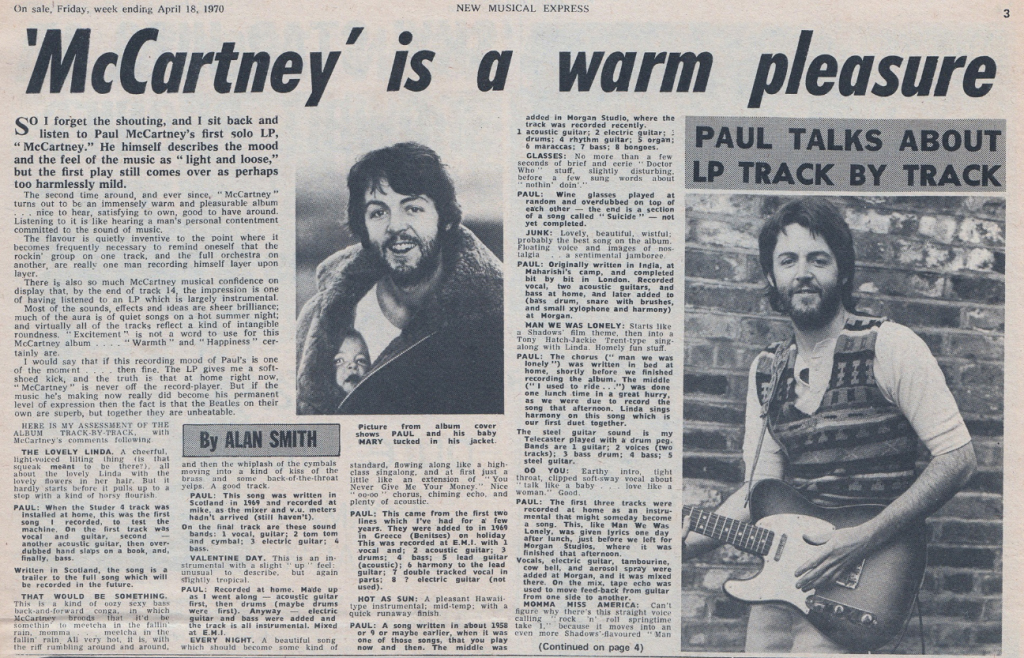

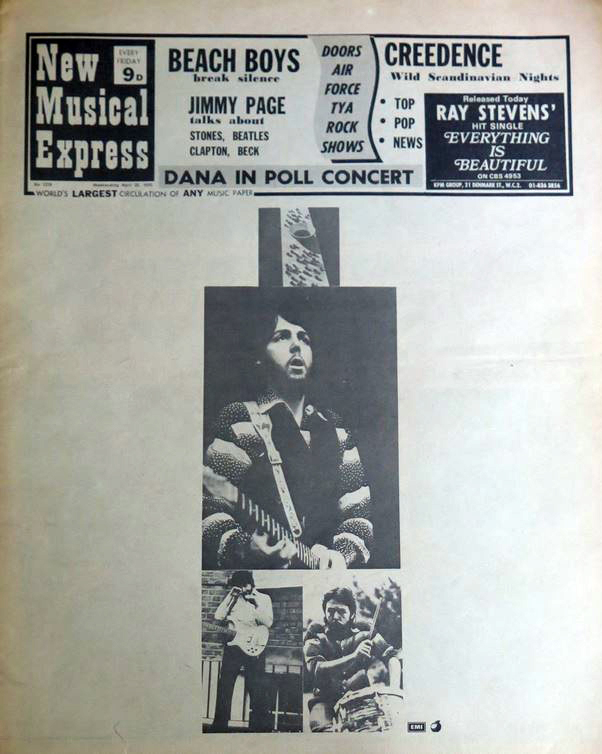
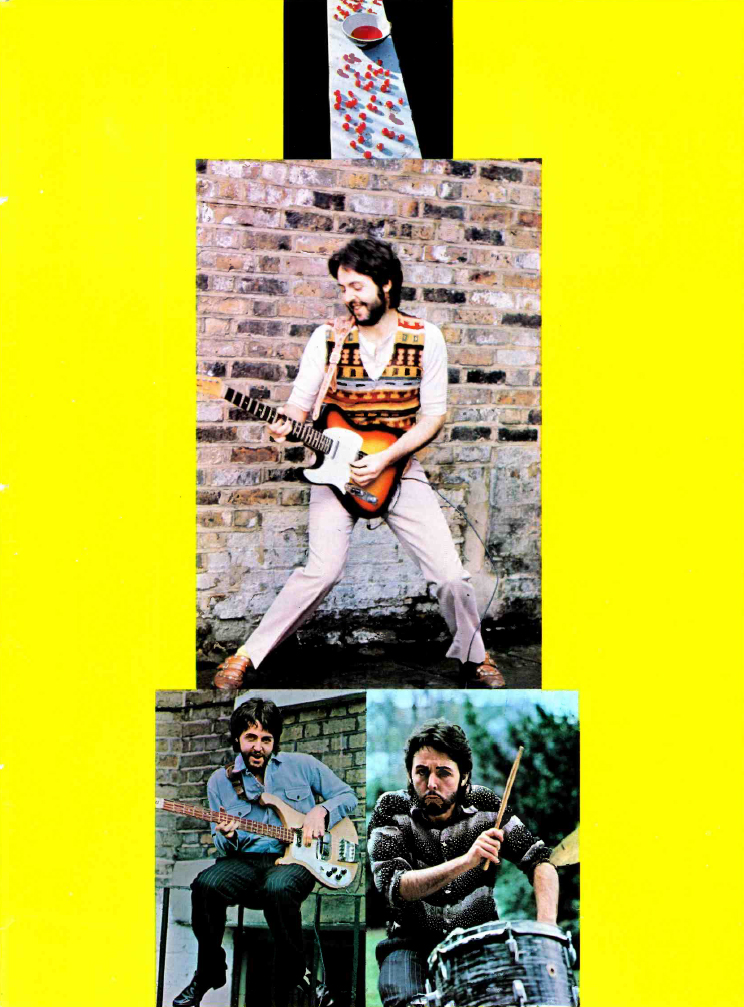
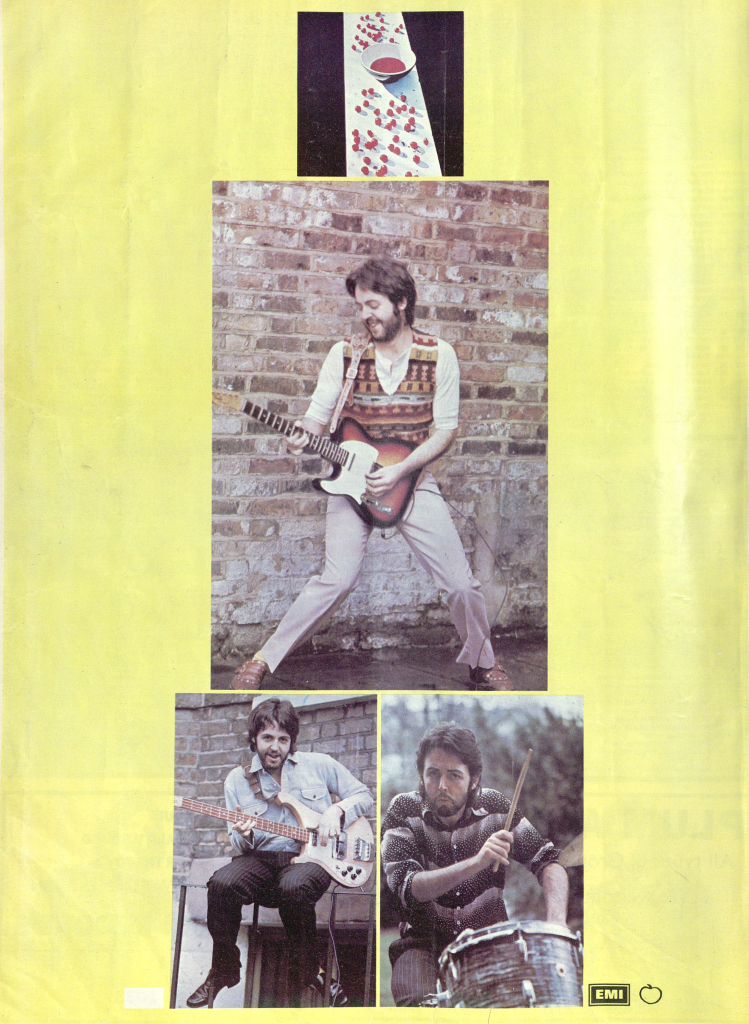
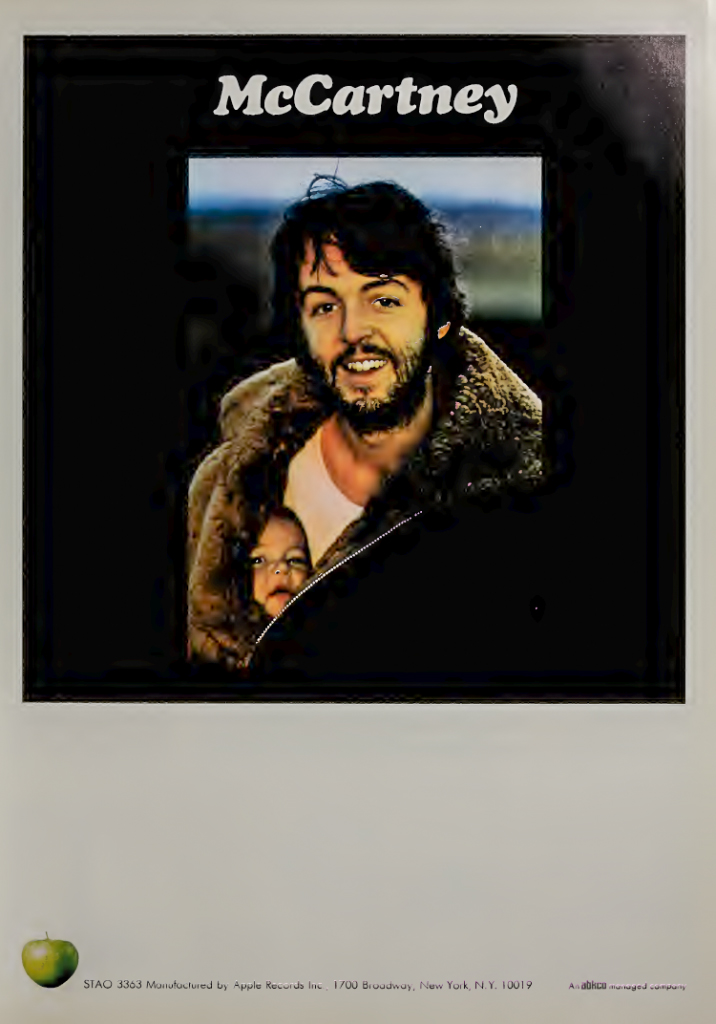
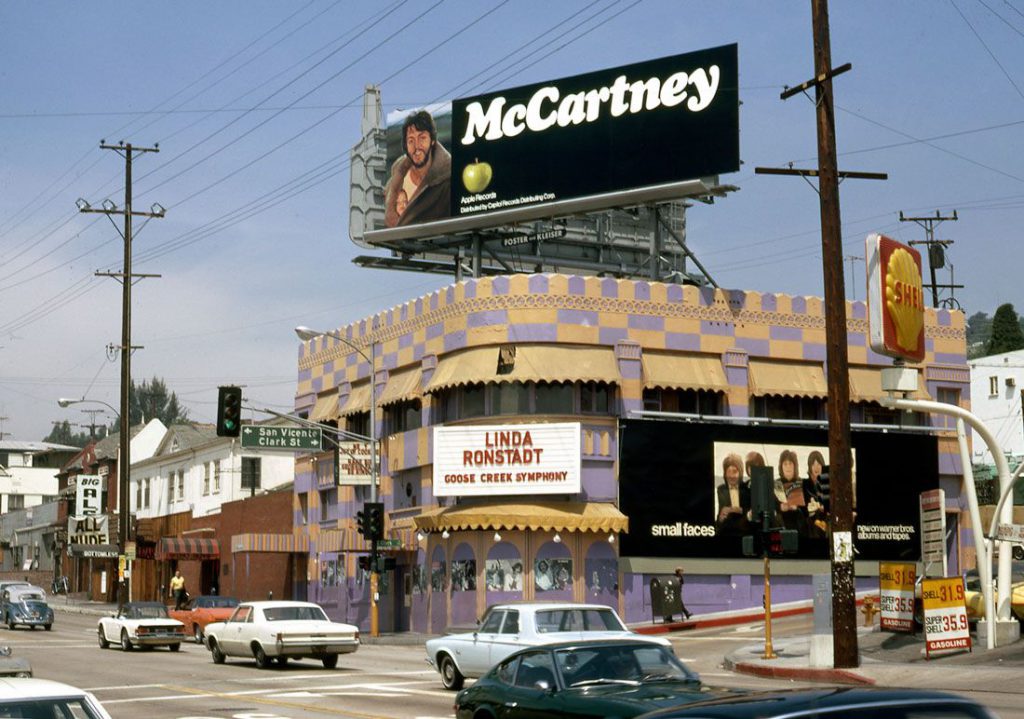

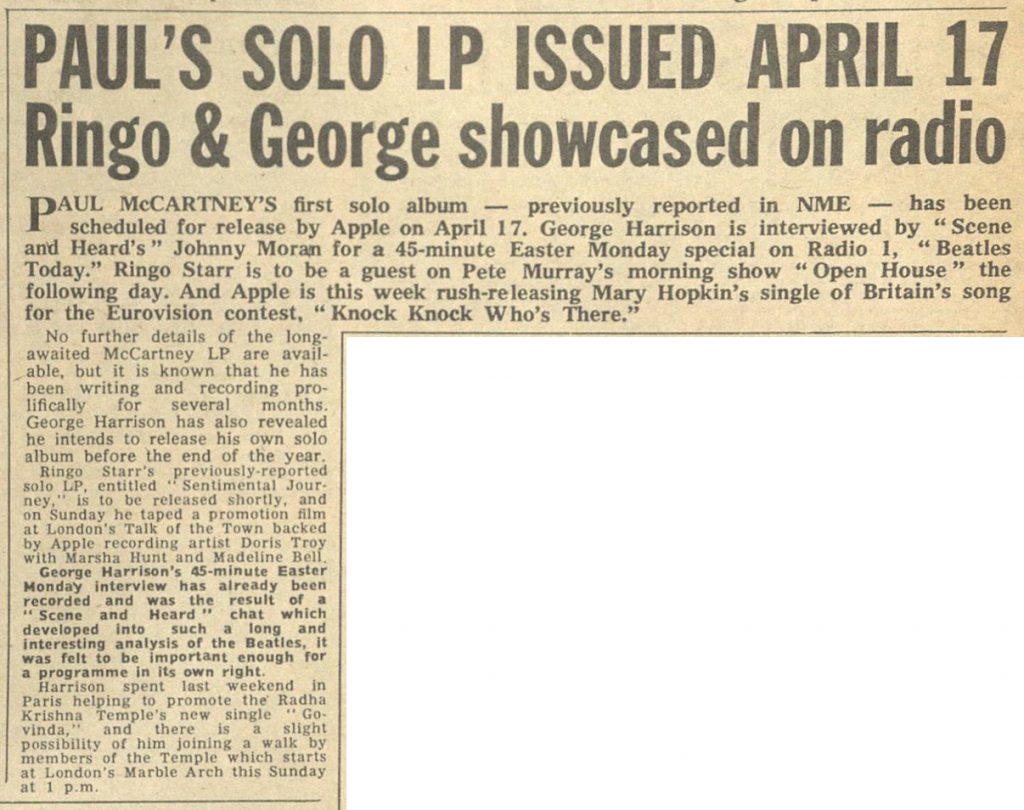

Last updated on July 27, 2023



Contribute!
Have you spotted an error on the page? Do you want to suggest new content? Or do you simply want to leave a comment ? Please use the form below!